New Technology in World War I
Seeing the Big Picture
All documents and text associated with this activity are printed below, followed by a worksheet for student responses.Introduction
World War I witnessed rapid technological advances that affected the outcome of the war – as well as how wars were waged for many years to come. Match the documents up according to six new military technologies used in WWI:- Tanks
- Chemical warfare or Poison gas
- Fortified trenches (including barbed wire, concrete, etc.)
- Airplanes (Airplanes were used in war before, but WWI was the first major conflict in which their use was widespread.)
- Machine guns
- Submarines
Making your matches will reveal an excerpt of an American soldier's letter. Read his eyewitness account to learn what it was like to be in the war, surrounded by these new weapons.
Click on the orange "open in new window" icon for a larger view of each photograph or document.
Name:
Class:
Class:
Worksheet
New Technology in World War I
Seeing the Big Picture
Examine the documents and text included in this activity. Consider how each document or piece of text relates to each other and create matched pairs. Write the text or document number next to its match below. Write your conclusion response in the space provided.1
2
3
4
5
6
1
Activity Element

2
Activity Element
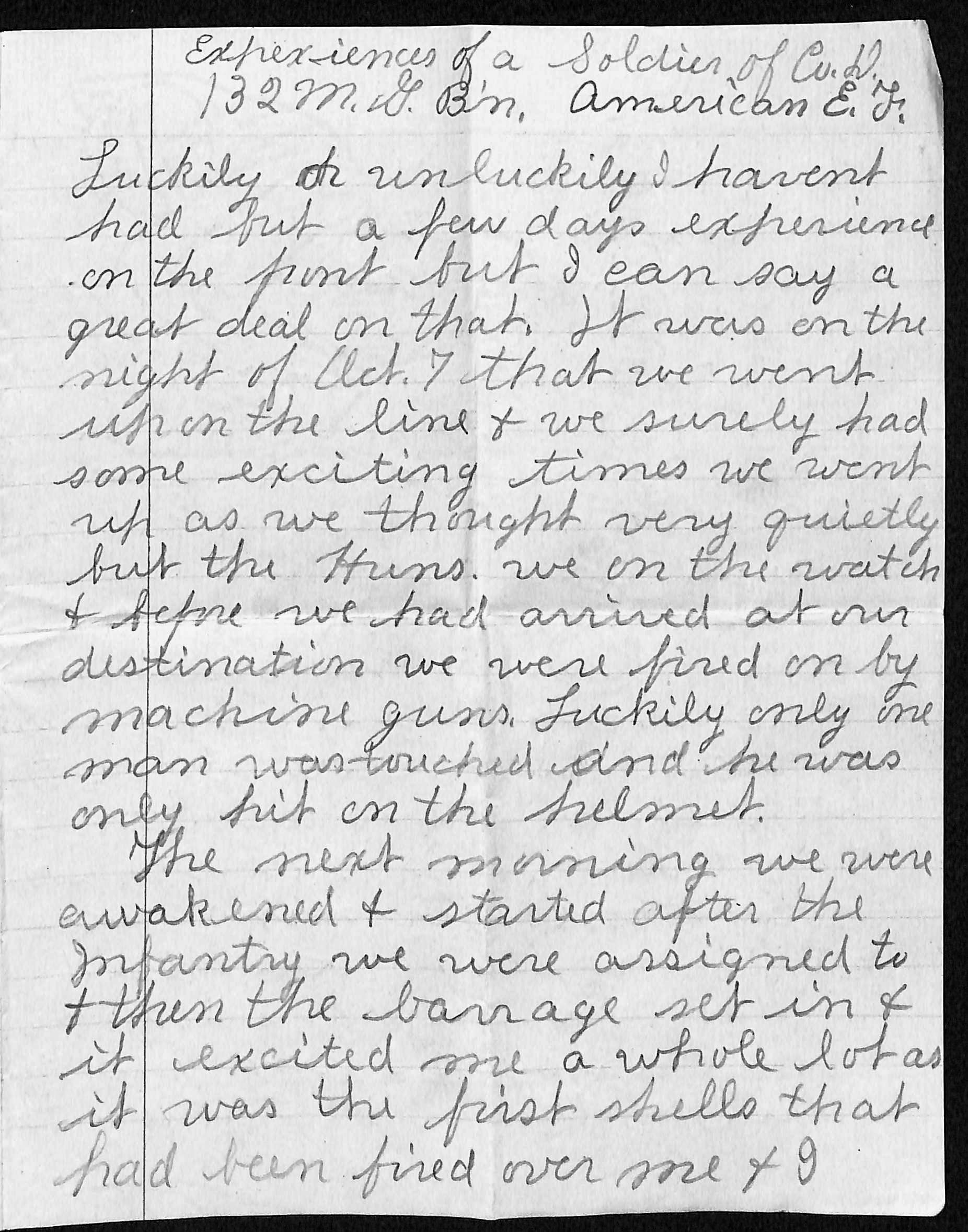
3
Activity Element

4
Activity Element
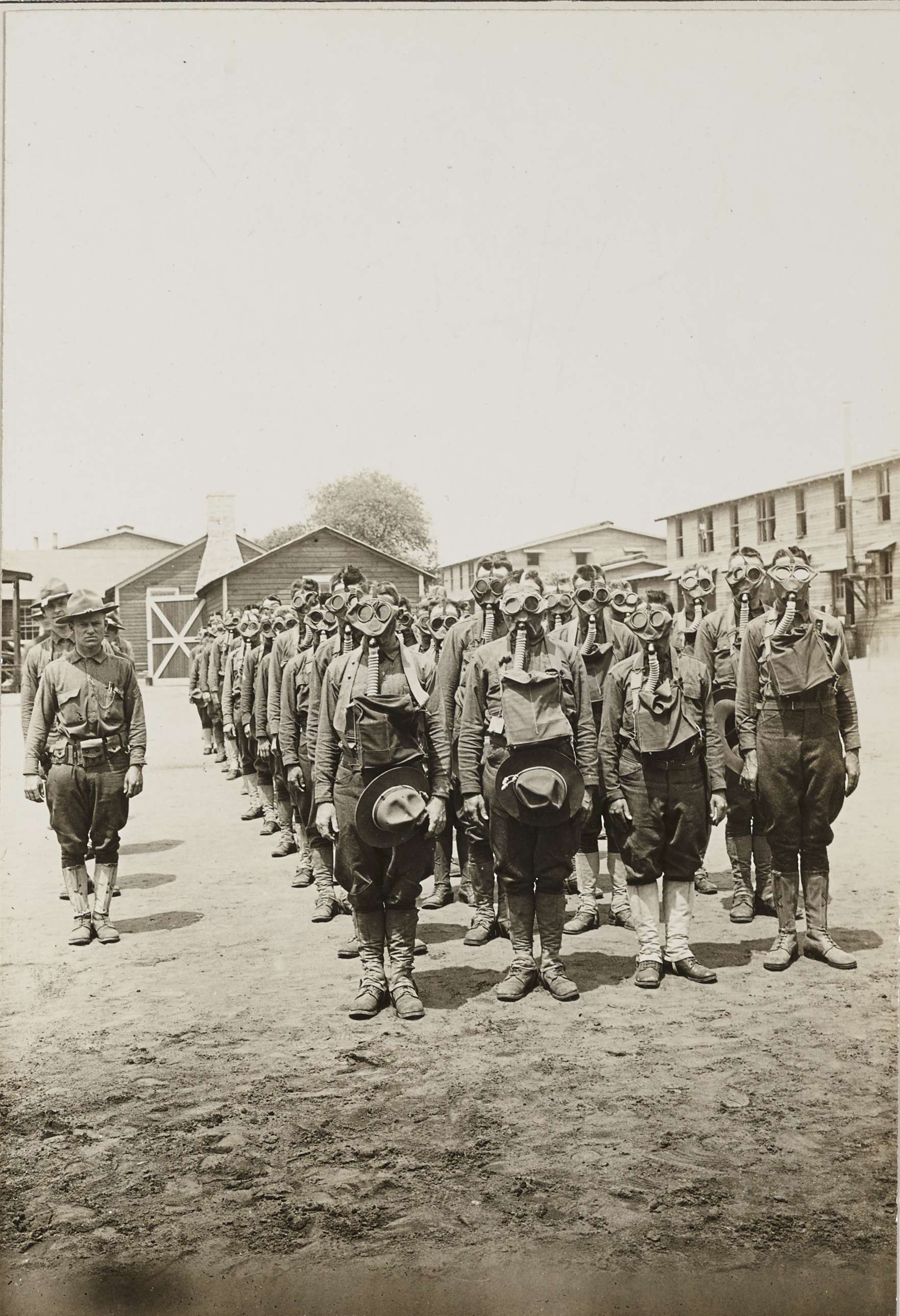
5
Activity Element

6
Activity Element
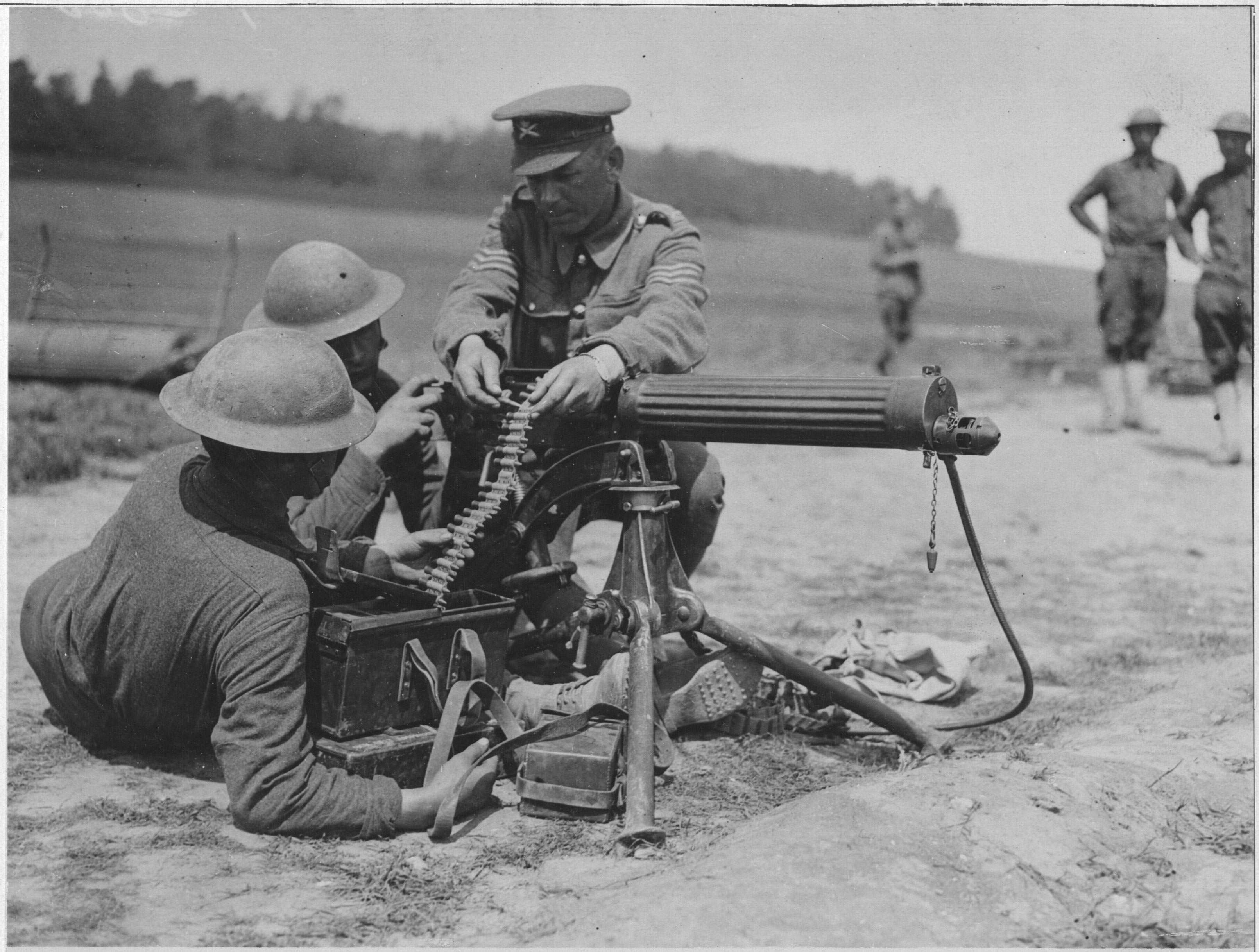
7
Activity Element
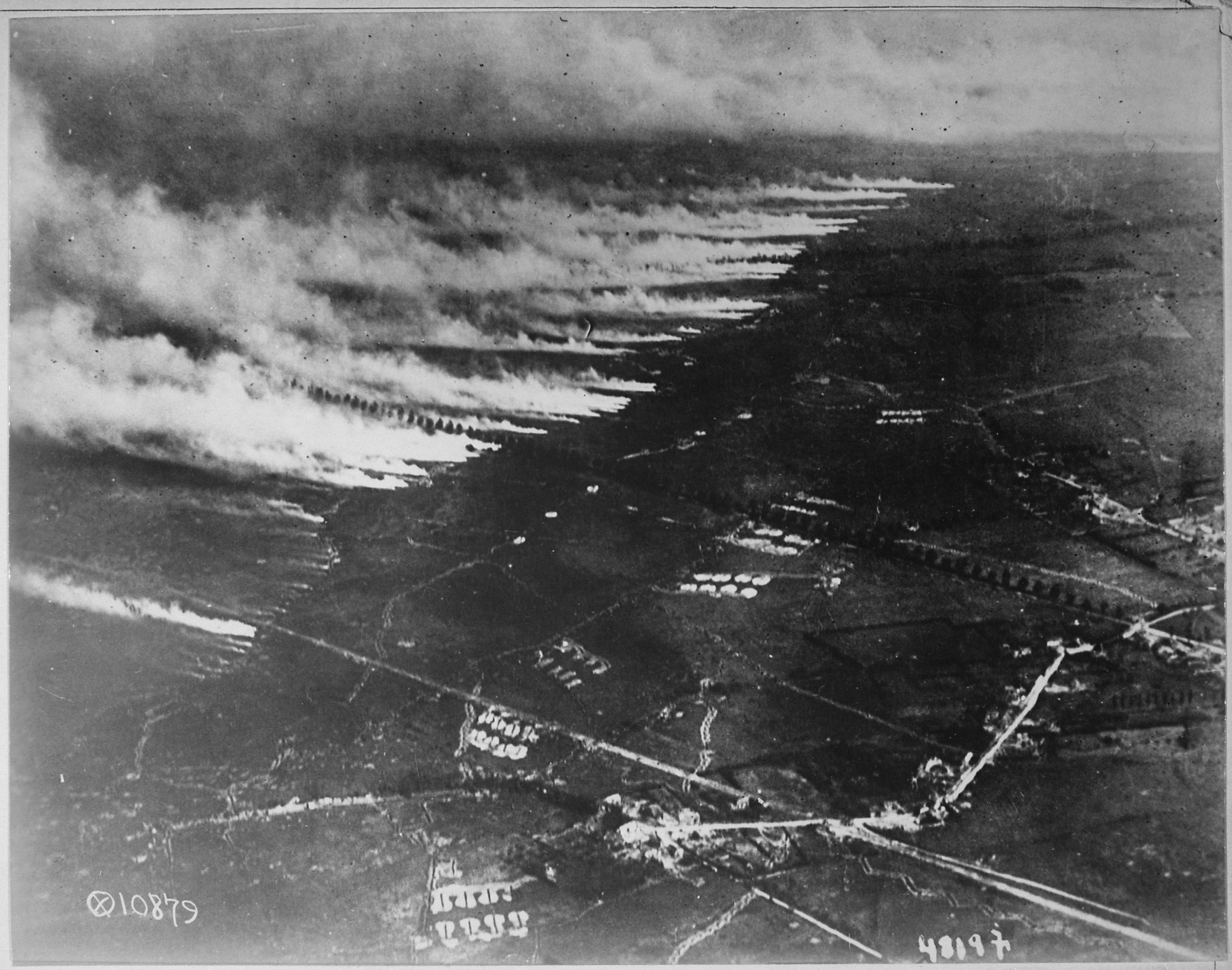
8
Activity Element
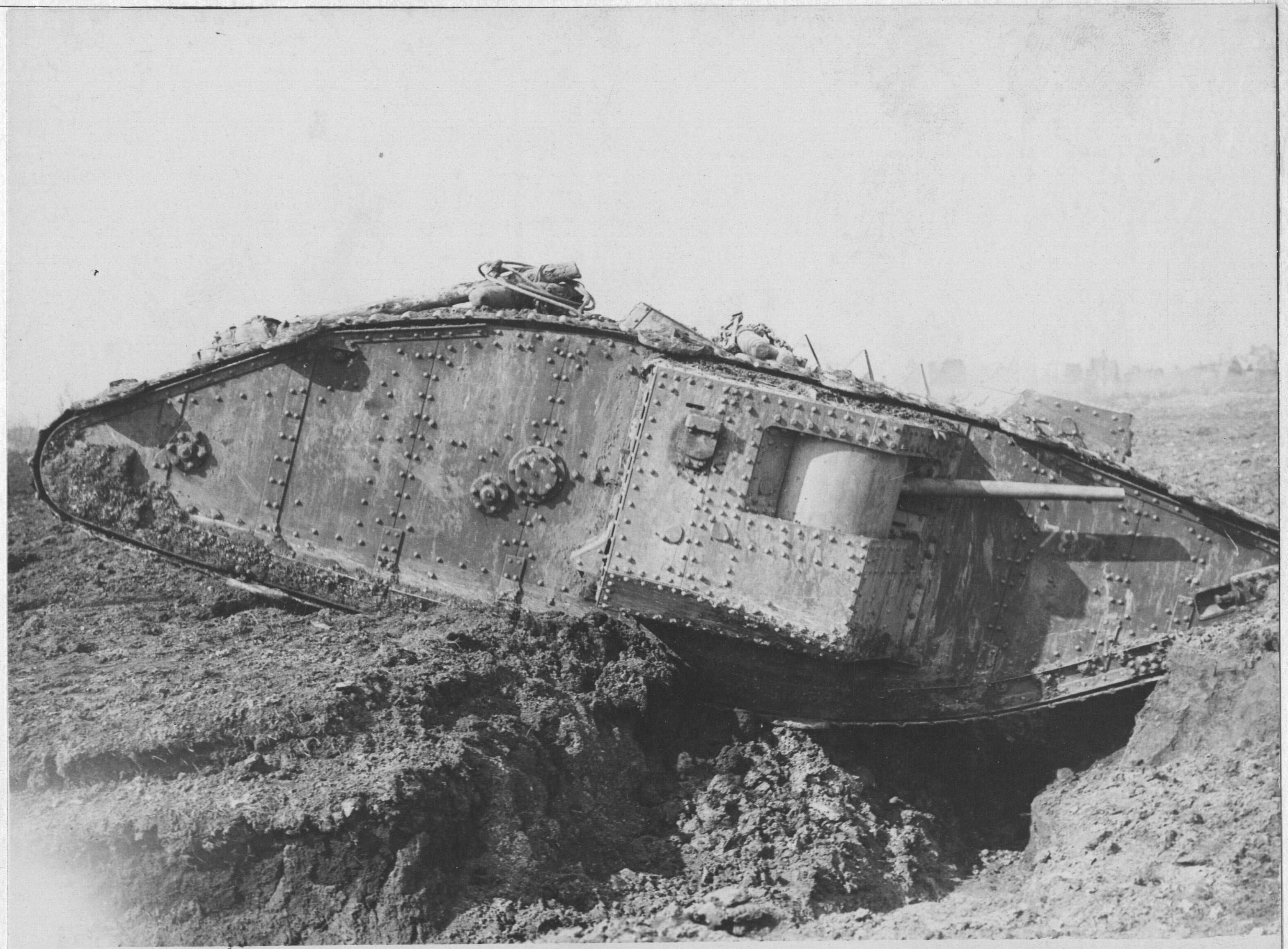
9
Activity Element
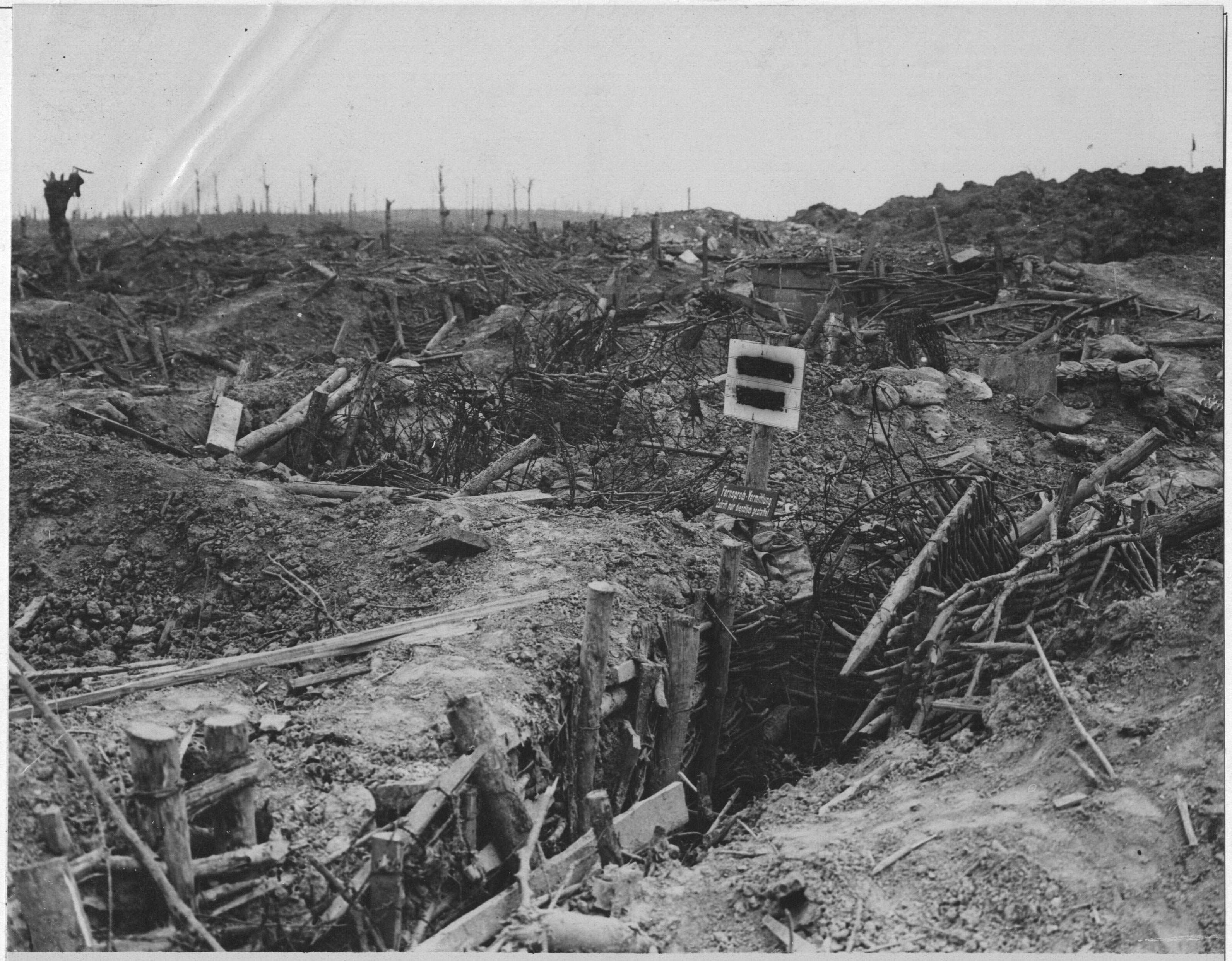
10
Activity Element

11
Activity Element
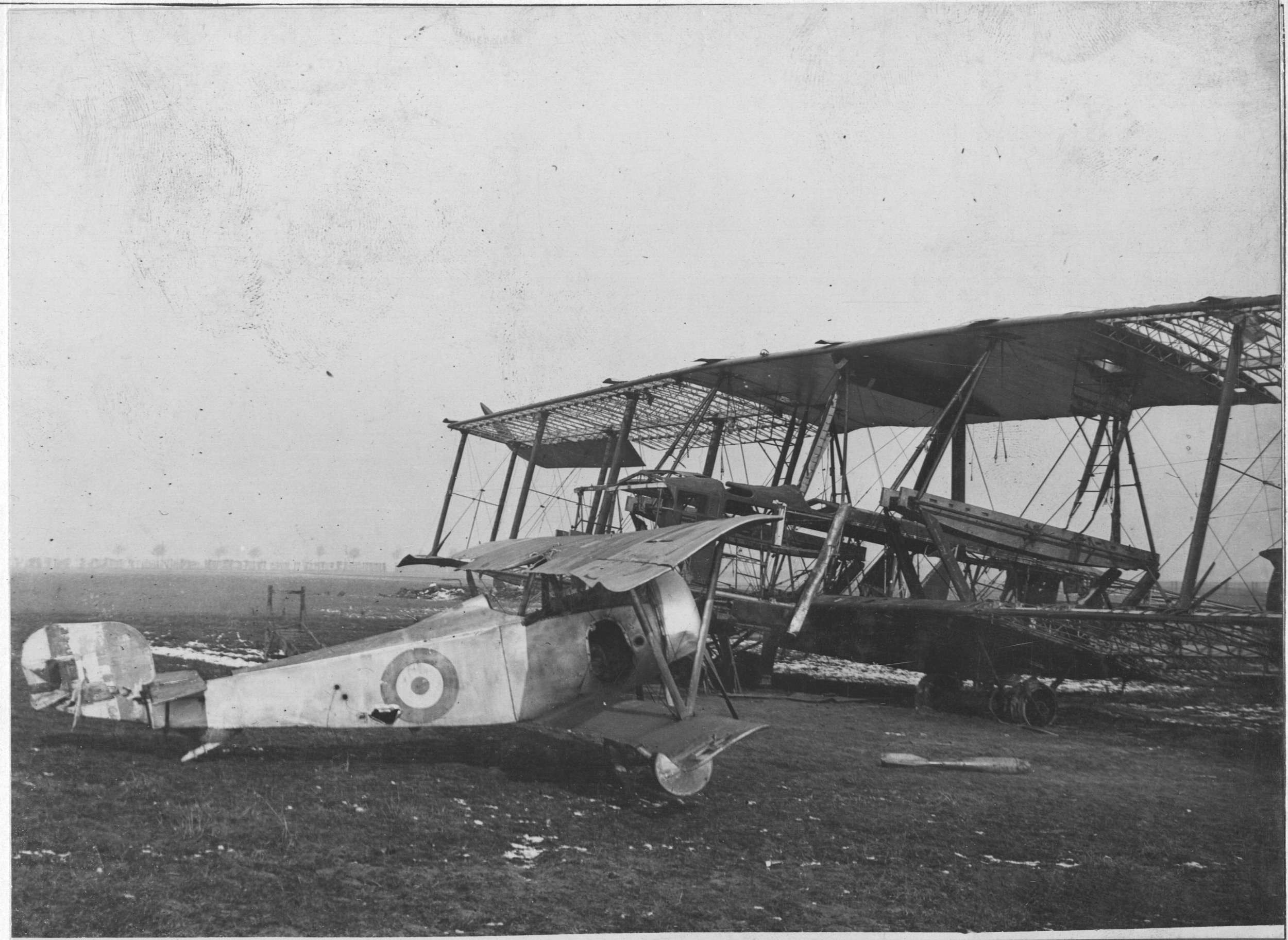
12
Activity Element
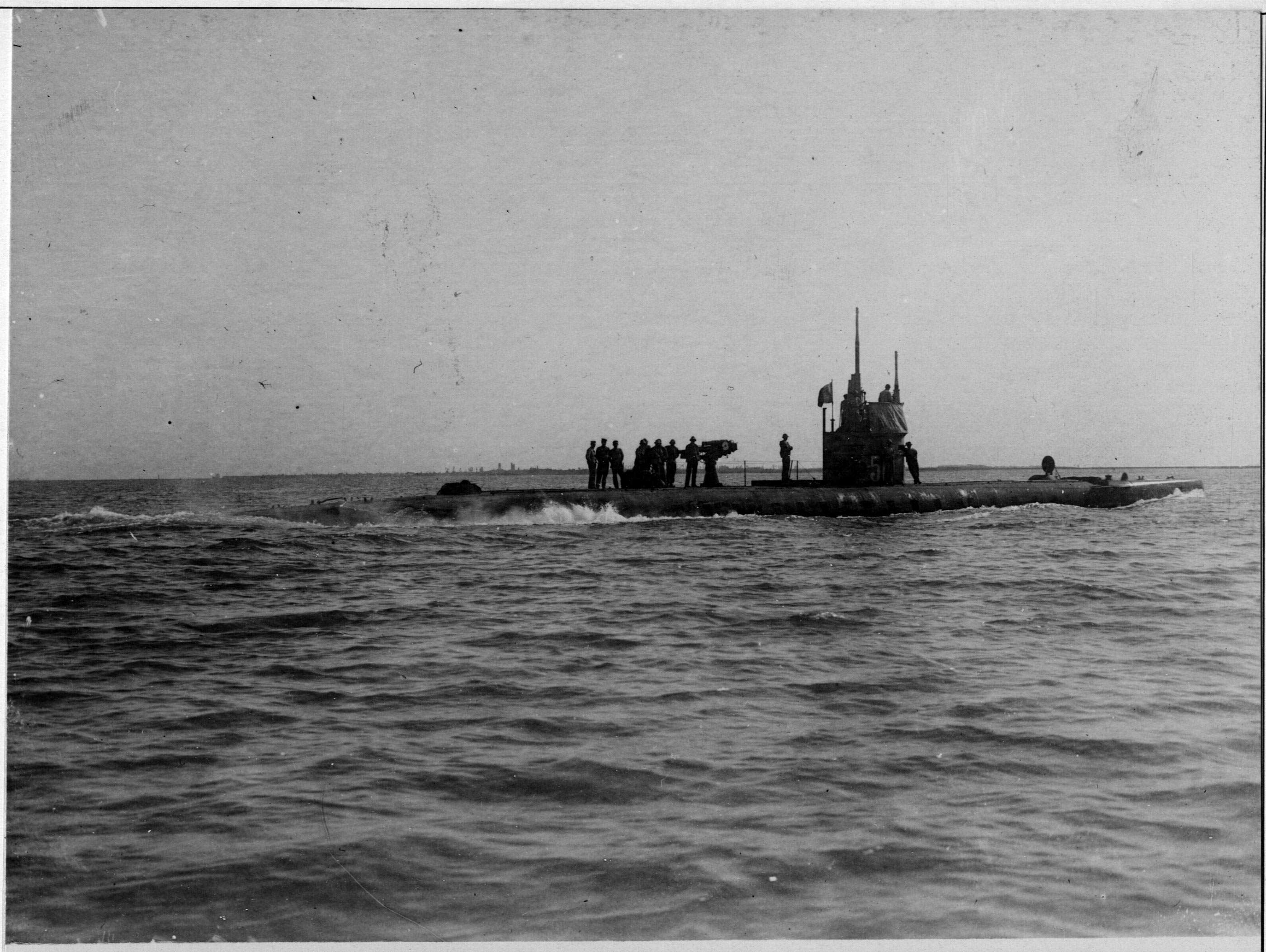
Culminating Document
Letter from Wayne to Folks
7/1/1918
An American soldier named Wayne, serving in France during World War I, sent this letter to his “folks.” It exposes a great deal about his personal experience and the larger conflict in which he was a participant—from machine guns to rations; from the Red Cross to the Marines; from the front lines to the trenches; from illness to death. He offered a detailed eyewitness description of war and its atrocities, using language reflective of the time and conflict, including referring to German soldiers as “Huns” and a single German soldier as “Fritz.”
Text adapted from “Teaching Difficult Topics with Primary Sources” in the November/December 2011 National Council for the Social Studies (NCSS) publication Social Education.
Text adapted from “Teaching Difficult Topics with Primary Sources” in the November/December 2011 National Council for the Social Studies (NCSS) publication Social Education.
This primary source comes from the Records of the American Expeditionary Forces (World War I).
National Archives Identifier: 6050582
Full Citation: Letter from Wayne to Folks; 7/1/1918; 3d Bn Replacements & Casualties June 18, 1918 Index Sheet 202 - 12.3; Records of Divisions, 1917 - 1920; Records of the American Expeditionary Forces (World War I), ; National Archives at College Park, College Park, MD. [Online Version, https://docsteach.org/documents/document/wayne-to-folks, April 20, 2024]Letter from Wayne to Folks
Page 1
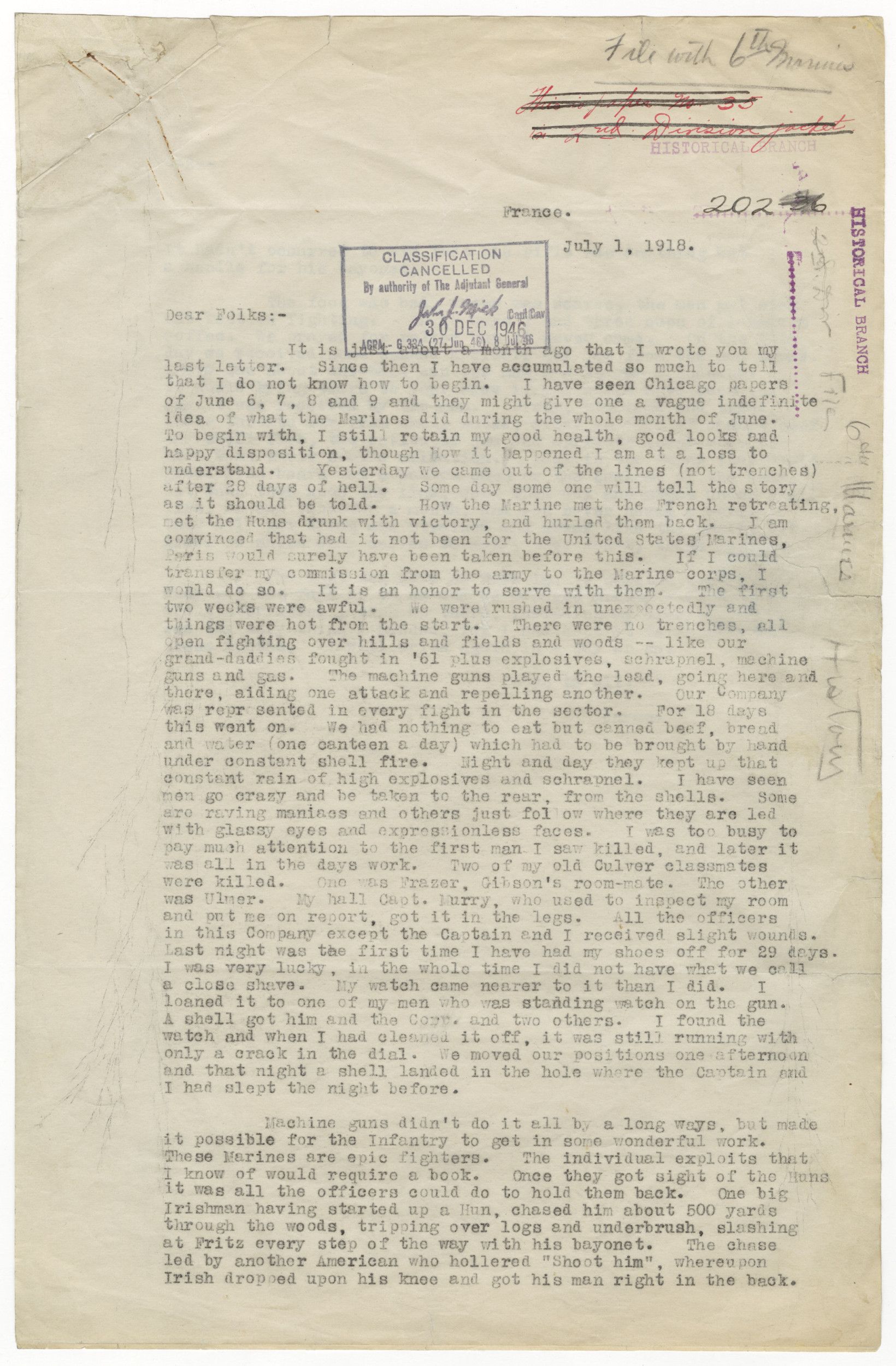
Letter from Wayne to Folks
Page 2
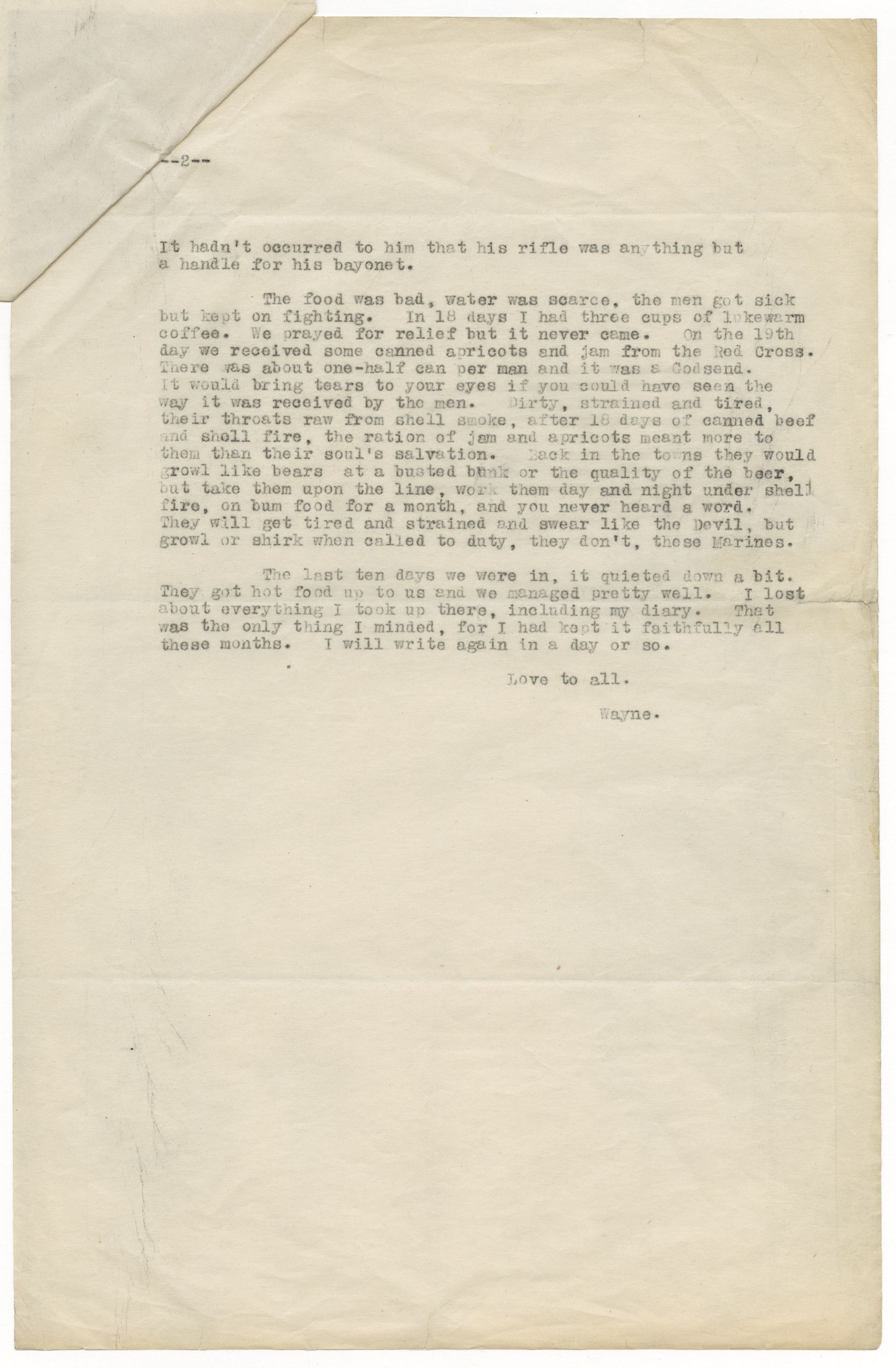
Conclusion
New Technology in World War I
Seeing the Big Picture
Answer the following in preparation for a class discussion:- The new military technologies used in WWI could destroy more lives and property much faster than in previous wars. Based on the American soldier's letter that you read after making your matches, what it was like to be in the war, surrounded by these weapons?
- What impact do you think this more destructive warfare had on the people fighting and the places where the war was fought?
- In your opinion, which technology probably had the biggest impact on later wars after WWI? Was this a good development or would the world have been better off without it?
Your Response
Document
Front view of the two-man tank manufactured by the Ford Motor Company, Detroit, Michigan. Ford Motor Company.
ca. 1918
The full description for this photograph reads; Front view of the two-man tank manufactured by the Ford Motor Company, Detroit, Michigan. Ford Motor Company.
This primary source comes from the Records of the War Department General and Special Staffs.
National Archives Identifier: 533687
Full Citation: Photograph 165-WW-313A(4); Front view of the two-man tank manufactured by the Ford Motor Company, Detroit, Michigan. Ford Motor Company.; ca. 1918; American Unofficial Collection of World War I Photographs, 1917 - 1918; Records of the War Department General and Special Staffs, ; National Archives at College Park, College Park, MD. [Online Version, https://docsteach.org/documents/document/tank-ford-view, April 20, 2024]Front view of the two-man tank manufactured by the Ford Motor Company, Detroit, Michigan. Ford Motor Company.
Page 1
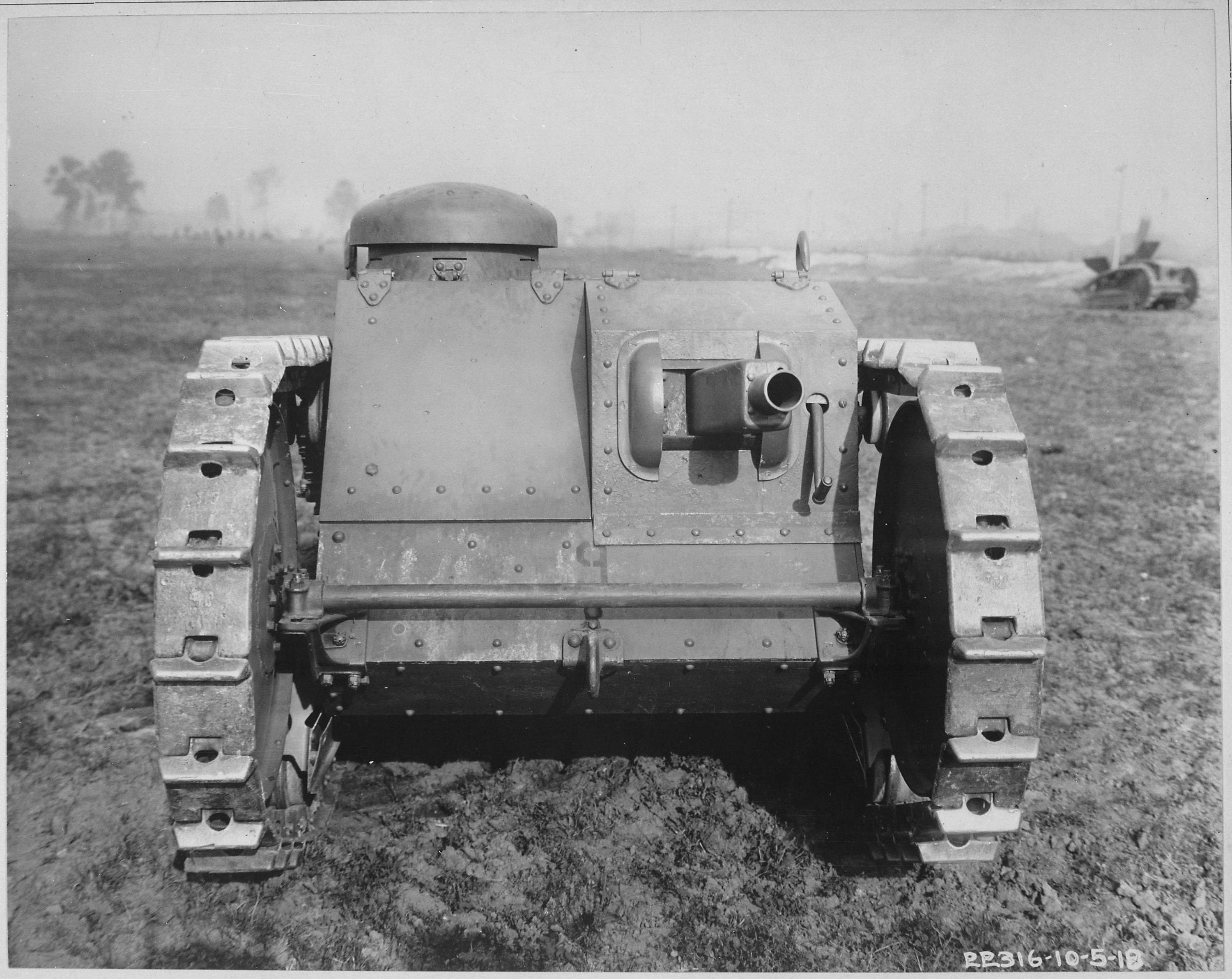
Document
Tank Crossing Trench
1914 -1918
The original caption for this photograph reads: A tank going over a trench on its way into action. It comes from a series of photographs depicting military activities during World War I that were taken by British photographers and acquired by the U.S. War Department.
This primary source comes from the Records of the War Department General and Special Staffs.
National Archives Identifier: 16579436
Full Citation: Photograph 165-BO-0834; Tank Crossing Trench; 1914 -1918; British Photographs of World War I, 1914 - 1918; Records of the War Department General and Special Staffs, ; National Archives at College Park, College Park, MD. [Online Version, https://docsteach.org/documents/document/tank-crossing-trench, April 20, 2024]Tank Crossing Trench
Page 1
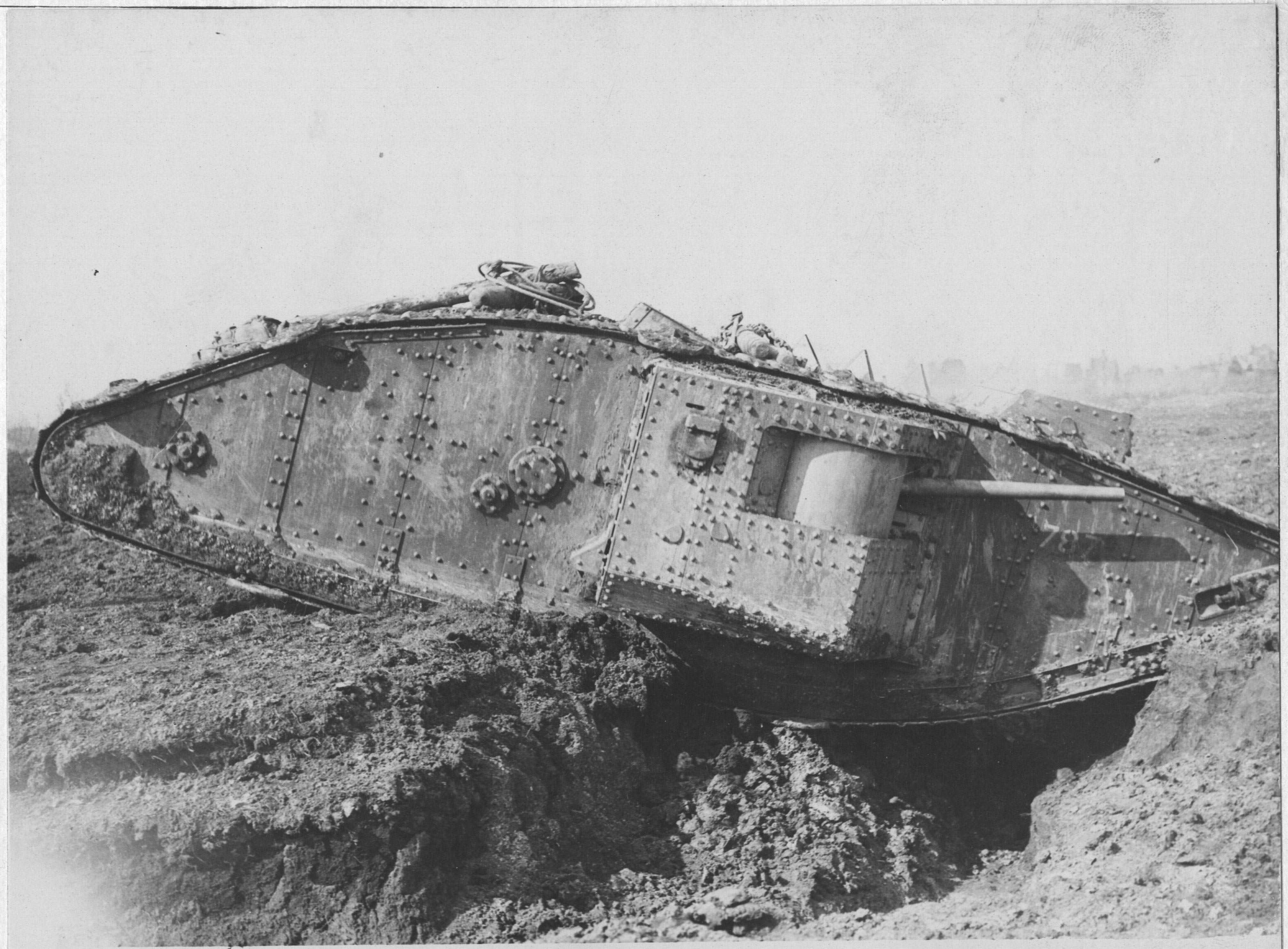
Document
Tractor Hauling Bombing Plane into Position
8/29/1918
The original caption for this photograph reads: A small motor tractor getting a huge R.A.F. bombing machine into position on an aerodrome 207th Squadron R.A.F. Ligescourt. Somme Campaign.
It comes from a series of photographs depicting military activities during World War I that were taken by British photographers and acquired by the U.S. War Department.
It comes from a series of photographs depicting military activities during World War I that were taken by British photographers and acquired by the U.S. War Department.
This primary source comes from the Records of the War Department General and Special Staffs.
National Archives Identifier: 16581120
Full Citation: Tractor Hauling Bombing Plane into Position; 8/29/1918; British Photographs of World War I, 1914 - 1918; Records of the War Department General and Special Staffs, ; National Archives at College Park, College Park, MD. [Online Version, https://docsteach.org/documents/document/tractor-bombing-plane, April 20, 2024]Tractor Hauling Bombing Plane into Position
Page 1
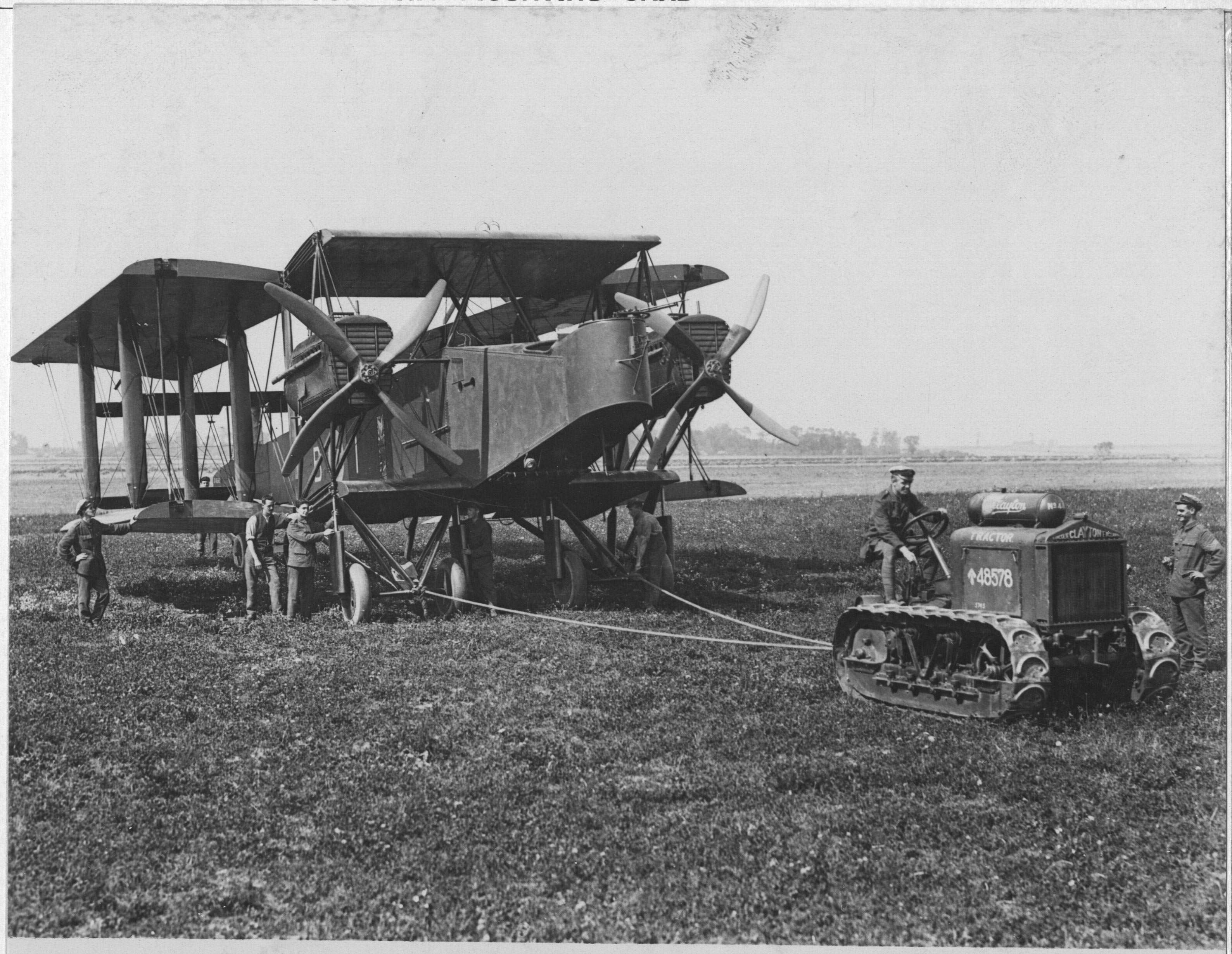
Document
British Scout Plane and Remains of a Five Engine German Gotha Plane. Cologne, Germany.
2/11/1919
The original caption for this photograph reads: Occupation of Germany. One of our small scouts in front of the remains of a 5 engined Gotha.
It comes from a series of photographs depicting military activities during World War I that were taken by British photographers and acquired by the U.S. War Department.
It comes from a series of photographs depicting military activities during World War I that were taken by British photographers and acquired by the U.S. War Department.
This primary source comes from the Records of the War Department General and Special Staffs .
National Archives Identifier: 16579189
Full Citation: Photograph 165-BO-0758; British Scout Plane and Remains of a Five Engine German Gotha Plane. Cologne, Germany. ; 2/11/1919; British Photographs of World War I, 1914 - 1918; Records of the War Department General and Special Staffs , ; National Archives at College Park, College Park, MD. [Online Version, https://docsteach.org/documents/document/scout-plane-gotha-plane, April 20, 2024]British Scout Plane and Remains of a Five Engine German Gotha Plane. Cologne, Germany.
Page 1
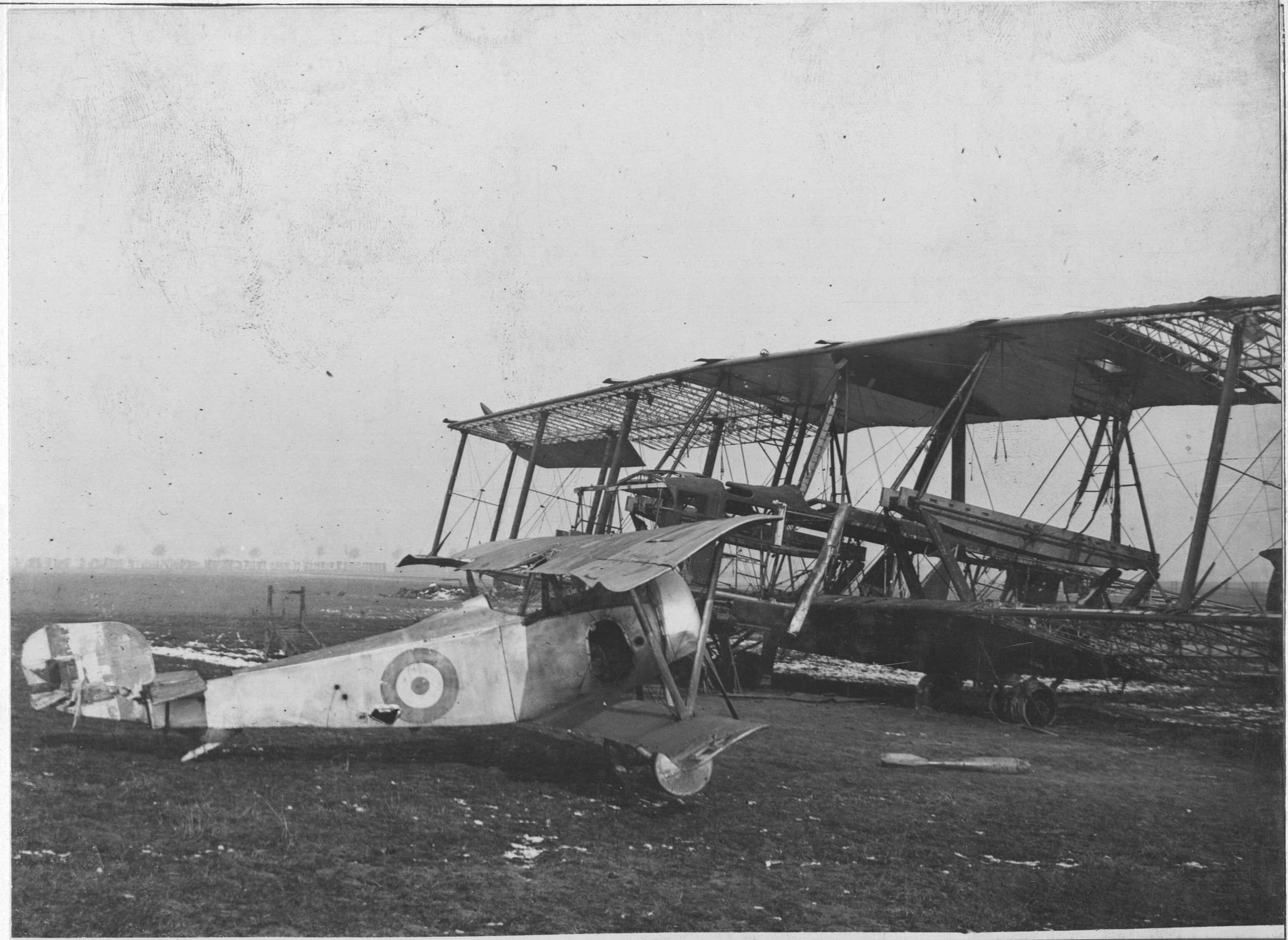
Document
Scene in the interior of a submarine
1914 -1918
The original caption for this photograph reads: Submarine interior. Foremost torpedo tubes.
It comes from a series of photographs depicting military activities during World War I that were taken by British photographers and acquired by the U.S. War Department.
It comes from a series of photographs depicting military activities during World War I that were taken by British photographers and acquired by the U.S. War Department.
This primary source comes from the Records of the War Department General and Special Staffs.
National Archives Identifier: 16581484
Full Citation: Photograph 165-BO-1817; Scene in the interior of a submarine; 1914 -1918; British Photographs of World War I, 1914 - 1918; Records of the War Department General and Special Staffs, ; National Archives at College Park, College Park, MD. [Online Version, https://docsteach.org/documents/document/interior-submarine, April 20, 2024]Scene in the interior of a submarine
Page 1
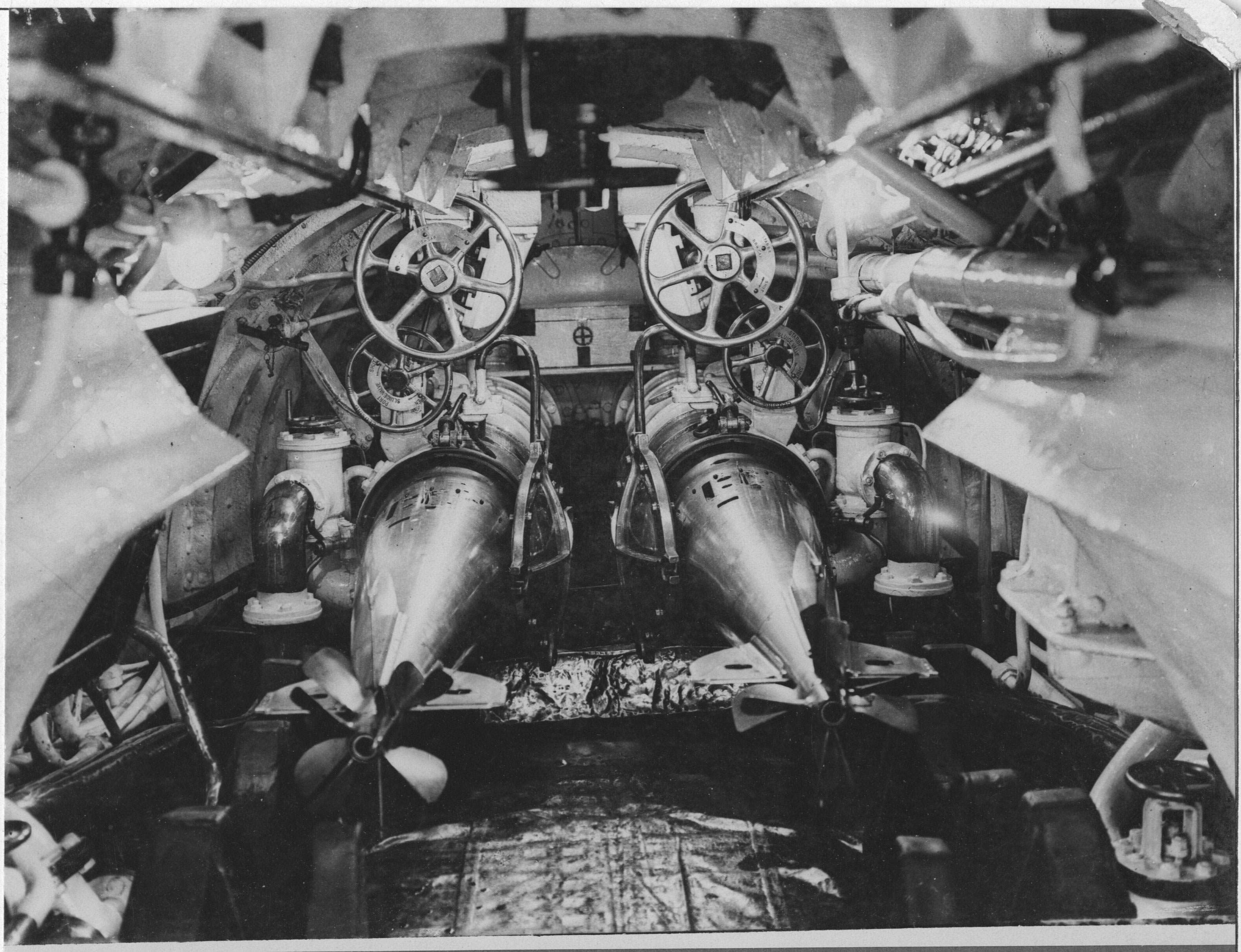
Document
Italian Submarine Leaving Venice on an Expedition
1914 -1918
The original caption for this photograph reads: With the Italian Navy. Italian submarine leaving Venice on a 'stunt.'
It comes from a series of photographs depicting military activities during World War I that were taken by British photographers and acquired by the U.S. War Department.
It comes from a series of photographs depicting military activities during World War I that were taken by British photographers and acquired by the U.S. War Department.
This primary source comes from the Records of the War Department General and Special Staffs.
National Archives Identifier: 16577783
Full Citation: Photograph 165-BO-0321; Italian Submarine Leaving Venice on an Expedition; 1914 -1918; British Photographs of World War I, 1914 - 1918; Records of the War Department General and Special Staffs, ; National Archives at College Park, College Park, MD. [Online Version, https://docsteach.org/documents/document/italian-submarine, April 20, 2024]Italian Submarine Leaving Venice on an Expedition
Page 1

Document
Personal Experience of World War I from Cpl. Eugene S. McLain
1918
In this World War I account, Corporal Eugene McLain describes parts of the war as "exciting." He was glad he had the experience, but was "also glad when it ended. Because honestly it is Hell."
This document comes from a collection of "Personal War Experiences" that WWI servicemen were asked to write after their return from the front during the Meuse-Argonne Offensive. The men were personnel of the 36th Division – known as the Lone Star Division, formed from the Texas and Oklahoma National Guard – of the American Expeditionary Forces (AEF).
Corporal McLain's account includes derogatory terms used more frequently at that time. He calls German soldiers "Huns," and refers to his American Indian comrades as "redskins." He wrote "...Believe me those redskins didn't have any mercy on them." McLain was referring to Company E of the 36th Division, which fought alongside Company D (to which Corporal McLain belonged). During WWI, American Indians were integrated into numerous divisions of the AEF. A few units, however – like Company E of the 36th Division – were all American Indian. More than 12,000 American Indians served in the armed forces of the United States during WWI. In the army, their many roles included serving as gunners, snipers, patrol workers, messengers, scouts, medical personnel, radio operators, as well as code talkers.
This document comes from a collection of "Personal War Experiences" that WWI servicemen were asked to write after their return from the front during the Meuse-Argonne Offensive. The men were personnel of the 36th Division – known as the Lone Star Division, formed from the Texas and Oklahoma National Guard – of the American Expeditionary Forces (AEF).
Corporal McLain's account includes derogatory terms used more frequently at that time. He calls German soldiers "Huns," and refers to his American Indian comrades as "redskins." He wrote "...Believe me those redskins didn't have any mercy on them." McLain was referring to Company E of the 36th Division, which fought alongside Company D (to which Corporal McLain belonged). During WWI, American Indians were integrated into numerous divisions of the AEF. A few units, however – like Company E of the 36th Division – were all American Indian. More than 12,000 American Indians served in the armed forces of the United States during WWI. In the army, their many roles included serving as gunners, snipers, patrol workers, messengers, scouts, medical personnel, radio operators, as well as code talkers.
Transcript
Experiences of a Soldier of Co. D.132 M.G. Bn. American E.F.
Luckily or unluckily I haven't had but a few days experience on the front but I can say a great deal on that. It was on the night of Oct. 7 that we went up on the line & we surely had some exciting times we went up as we thought very quietly but the Huns were on the watch & before we had arrived at our destination we were fired on by machine guns. Luckily only one man was touched and he was only hit on the helmet.
The next morning we were awakened & started after the Infantry we were assigned to & then the barrage set in & it excited me a whole lot as it was the first shells that had been fired over me & I
couldn't tell if they were Bosh or not. But it didn't take me long to tell the difference when a J.I. can hit close to me.
Well we advanced over the hill & the Infantry came in contact with some Huns. & Believe me those redskins didn't have any mercy on them. After taking up our positions we stayed thru 2 or 3 days.
On Oct. 11 the 72 brigade went over & the formation was excellent in the sector I could see. & They went several kilometers before they stopped. In the afternoon we begin to follow. & It is nice to look at the way those Germans were dug in & the way they were fixed.
Then we hiked 2 days & one night & had a day or 2 rest. Plenty eats & felt rather like taking too them again. But we never got the chance for some days.
Well we stayed around on the line untill Oct 27 & another drive was made. Luckily I was where I could see all & It was rather exciting untill some Hun across the river decided to fire a few barrels & he kept me down untill it was over & then some.
Well I am glad it is over because when a six inch shell bursts about 10 ft. from you it sounds like a 14 in. & It really excites a fellow.
I am glad I have had the experience & also glad it is finish. Because honestly it is Hell.
Eugene S. McLain.
This primary source comes from the Records of the American Expeditionary Forces (World War I), 1848 - 1942.
National Archives Identifier: 77417784
Full Citation: Personal Experience of World War I from Cpl. Eugene S. McLain; 1918; McLain Eugene S. Cpl. 132nd M.G. Bn. CO. D 36th Division 1918, 236.33.61; Records of Divisions, 1917 - 1920; Records of the American Expeditionary Forces (World War I), 1848 - 1942, ; National Archives at College Park, College Park, MD. [Online Version, https://docsteach.org/documents/document/wwi-mclain, April 20, 2024]Personal Experience of World War I from Cpl. Eugene S. McLain
Page 1
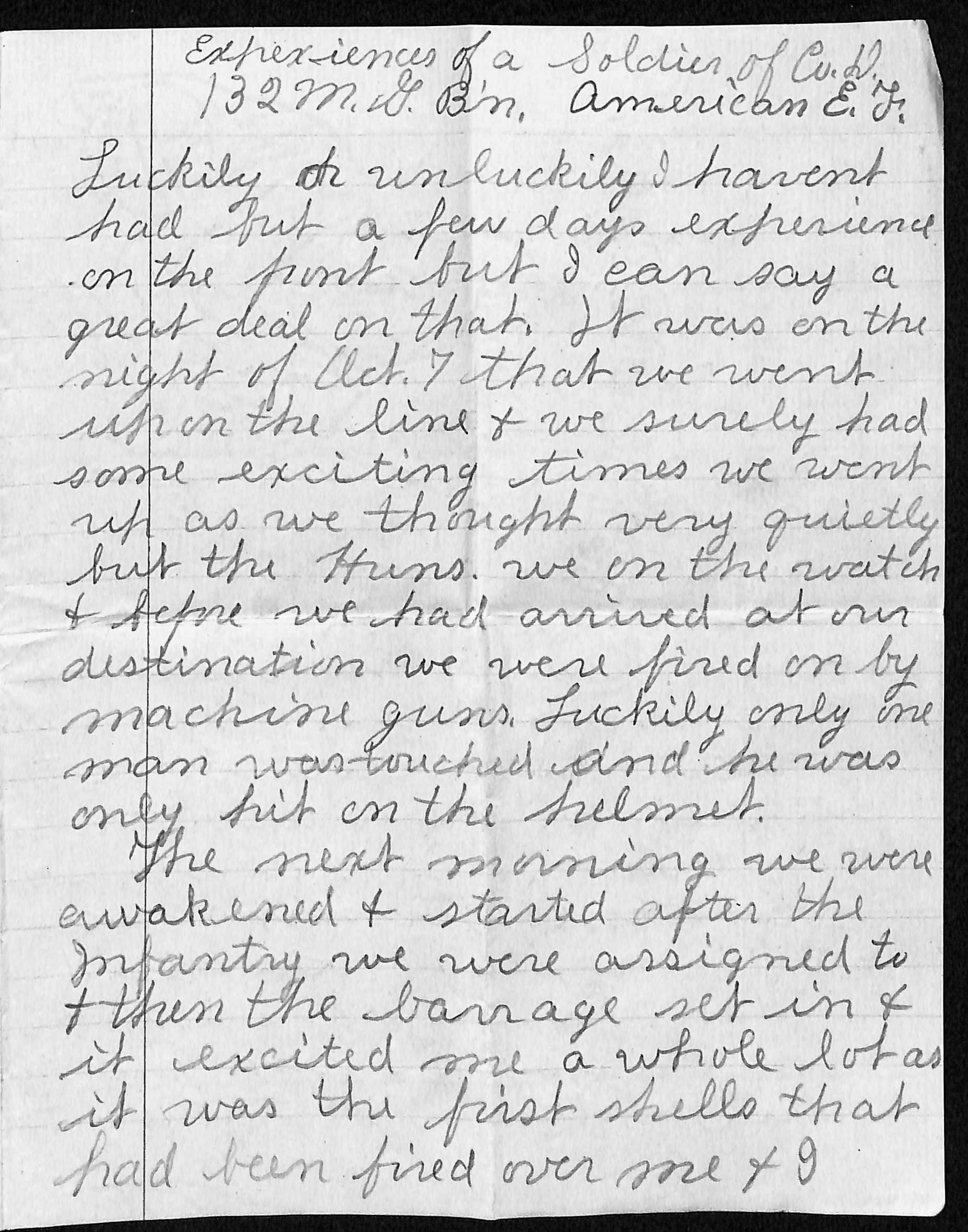
Personal Experience of World War I from Cpl. Eugene S. McLain
Page 2

Personal Experience of World War I from Cpl. Eugene S. McLain
Page 3
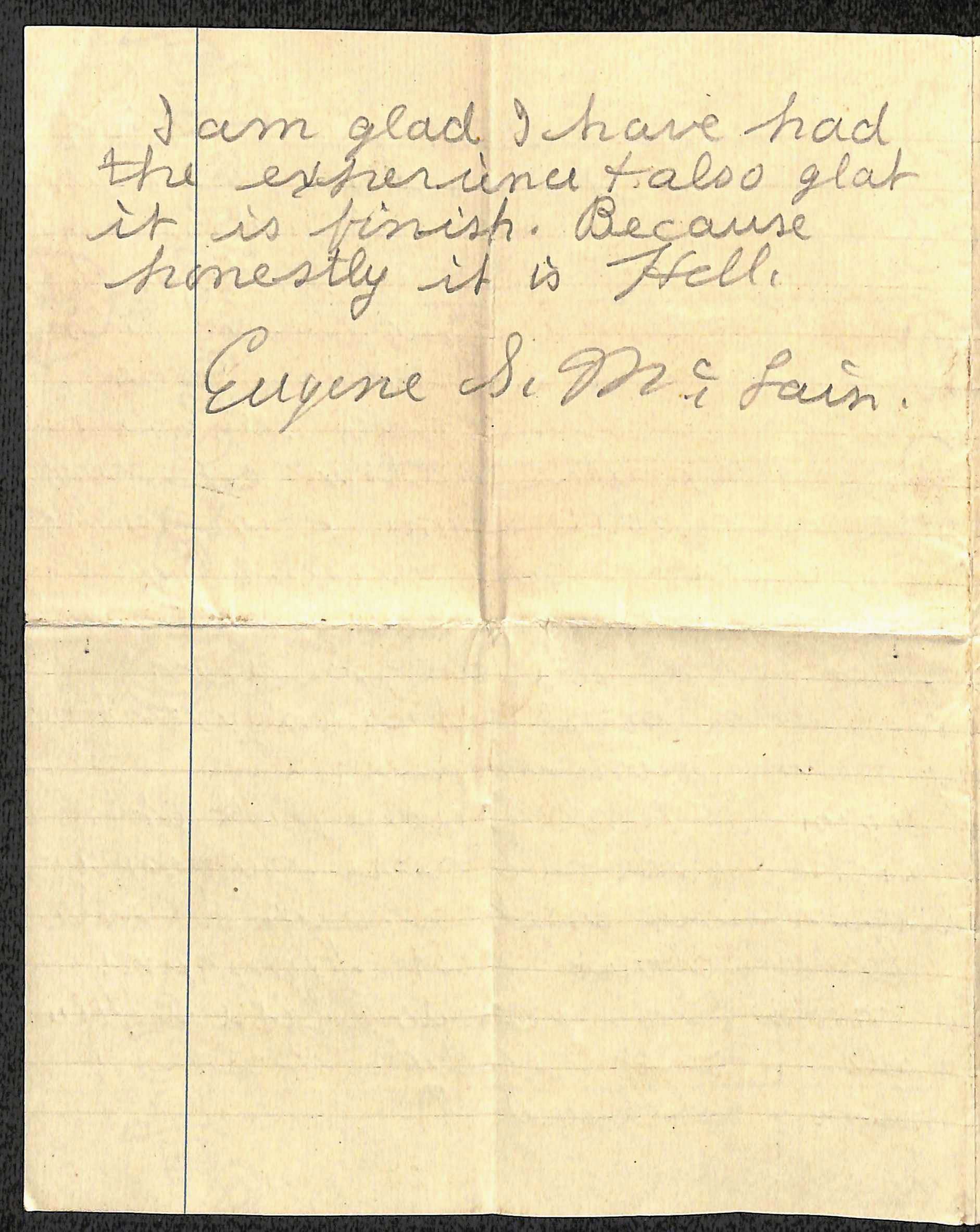
Document
Americans Receiving Machine Gun Instruction from British Instructor. Near Moulle, France
5/22/1918
The original caption for this photograph reads: Americans receiving machine gun instruction from British instructor. Near Moulle, France.
It comes from a series of photographs depicting military activities during World War I that were taken by British photographers and acquired by the U.S. War Department.
It comes from a series of photographs depicting military activities during World War I that were taken by British photographers and acquired by the U.S. War Department.
This primary source comes from the Records of the War Department General and Special Staffs.
National Archives Identifier: 16578949
Full Citation: Photograph 165-BO-0684; Americans Receiving Machine Gun Instruction from British Instructor. Near Moulle, France; 5/22/1918; British Photographs of World War I, 1914 - 1918; Records of the War Department General and Special Staffs, ; National Archives at College Park, College Park, MD. [Online Version, https://docsteach.org/documents/document/machine-gun-instruction, April 20, 2024]Americans Receiving Machine Gun Instruction from British Instructor. Near Moulle, France
Page 1
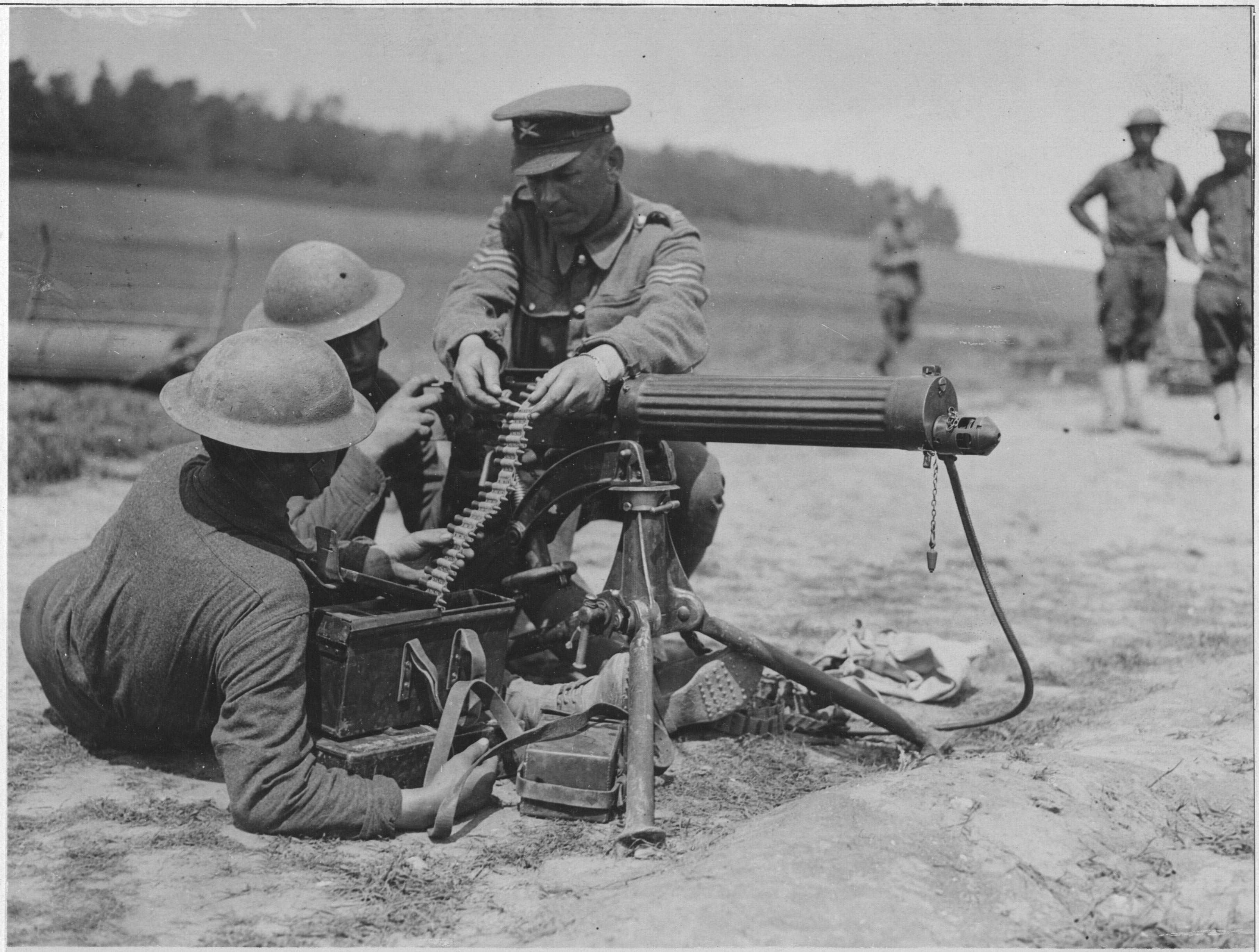
Document
Chemical Warfare Service - Drills- Schools - Gas mask drill at Camp Dix, Wrightstown, New Jersey
1/1919
The original caption for this World War I photograph reads: Gas mask drill and Camp Dix, Wrightstown, New Jersey.
This primary source comes from the Records of the War Department General and Special Staffs, 1860 - 1952.
National Archives Identifier: 26423932
Full Citation: Chemical Warfare Service - Drills- Schools - Gas mask drill at Camp Dix, Wrightstown, New Jersey; 1/1919; Chemical Warfare Service - Drills- Schools, 1917 - 1918; American Unofficial Collection of World War I Photographs, 1917 - 1918; Records of the War Department General and Special Staffs, 1860 - 1952, ; National Archives at College Park, College Park, MD. [Online Version, https://docsteach.org/documents/document/recruits-prepare-gas-mask-drill, April 20, 2024]Chemical Warfare Service - Drills- Schools - Gas mask drill at Camp Dix, Wrightstown, New Jersey
Page 1
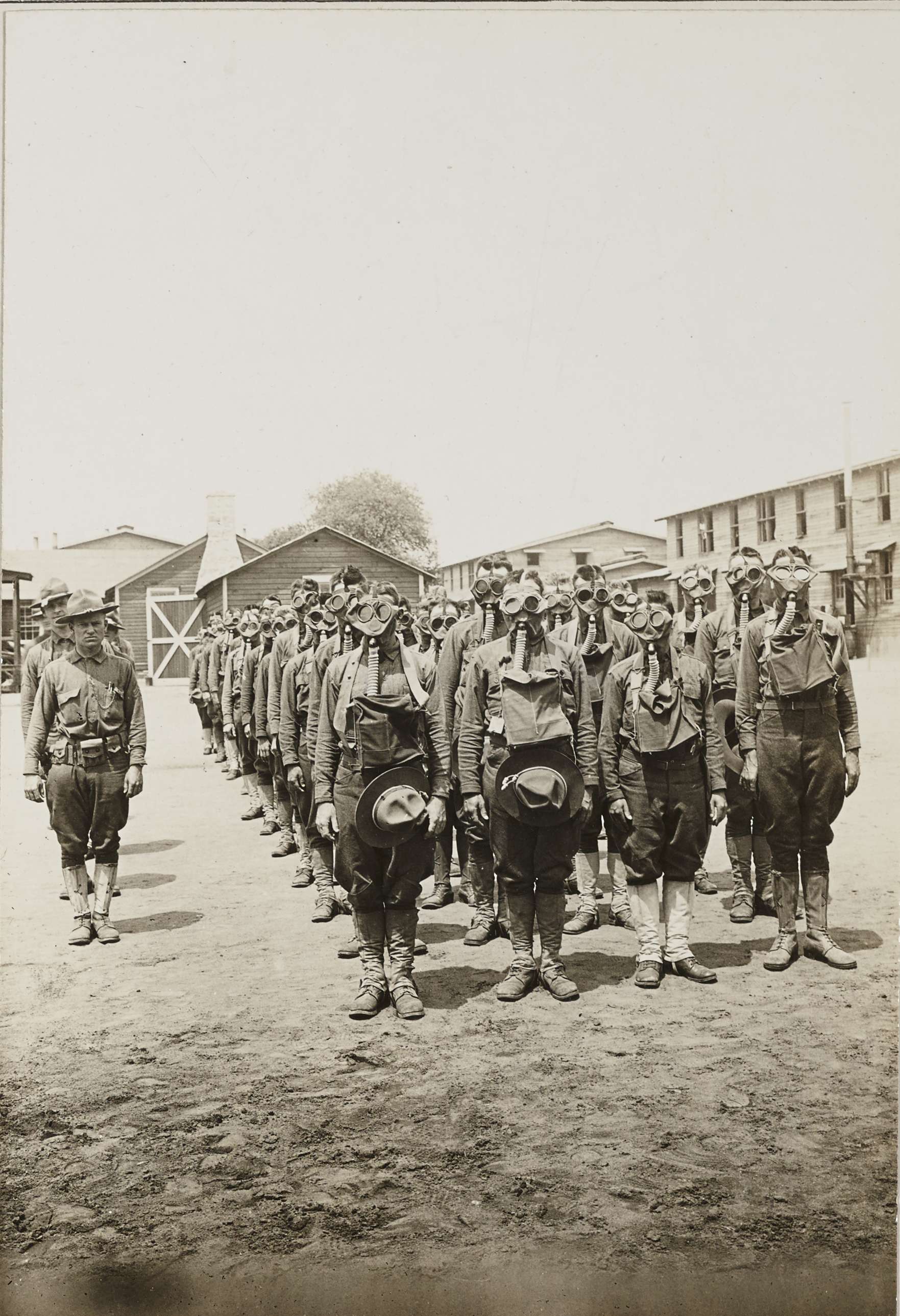
Document
French soldiers making a gas and flame attack on German trenches in Flanders. Belgium
This primary source comes from the Records of the Office of the Chief Signal Officer.
National Archives Identifier: 530722
Full Citation: French soldiers making a gas and flame attack on German trenches in Flanders. Belgium; Records of the Office of the Chief Signal Officer, . [Online Version, https://docsteach.org/documents/document/french-soldiers-making-a-gas-and-flame-attack-on-german-trenches-in-flanders-belgium, April 20, 2024]French soldiers making a gas and flame attack on German trenches in Flanders. Belgium
Page 2
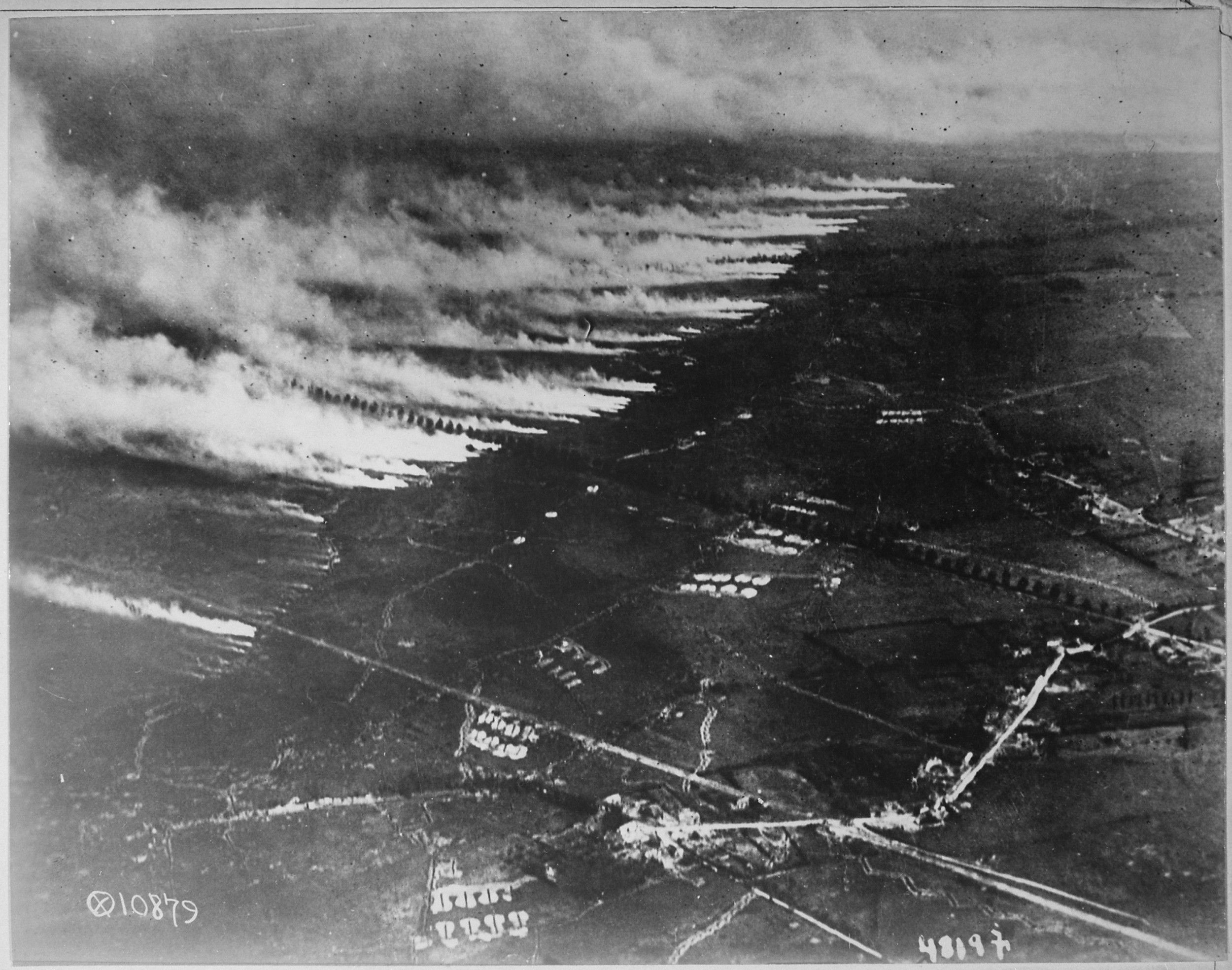
Document
Barbed Wire Gate to Trench. Ypres salient and area. Cambrin
9/16/1917
The original caption for this photograph reads: Barbed wire gate in a trench to check the enemy if he made a successful raid. Cambrin. Ypres Salient and Area.
It comes from a series of photographs depicting military activities during World War I that were taken by British photographers and acquired by the U.S. War Department.
It comes from a series of photographs depicting military activities during World War I that were taken by British photographers and acquired by the U.S. War Department.
This primary source comes from the Records of the War Department General and Special Staffs .
National Archives Identifier: 16580840
Full Citation: Photograph 165-BO-1495; Barbed Wire Gate to Trench. Ypres salient and area. Cambrin ; 9/16/1917; British Photographs of World War I, 1914 - 1918; Records of the War Department General and Special Staffs , ; National Archives at College Park, College Park, MD. [Online Version, https://docsteach.org/documents/document/barbed-wire-gate-trench, April 20, 2024]Barbed Wire Gate to Trench. Ypres salient and area. Cambrin
Page 1
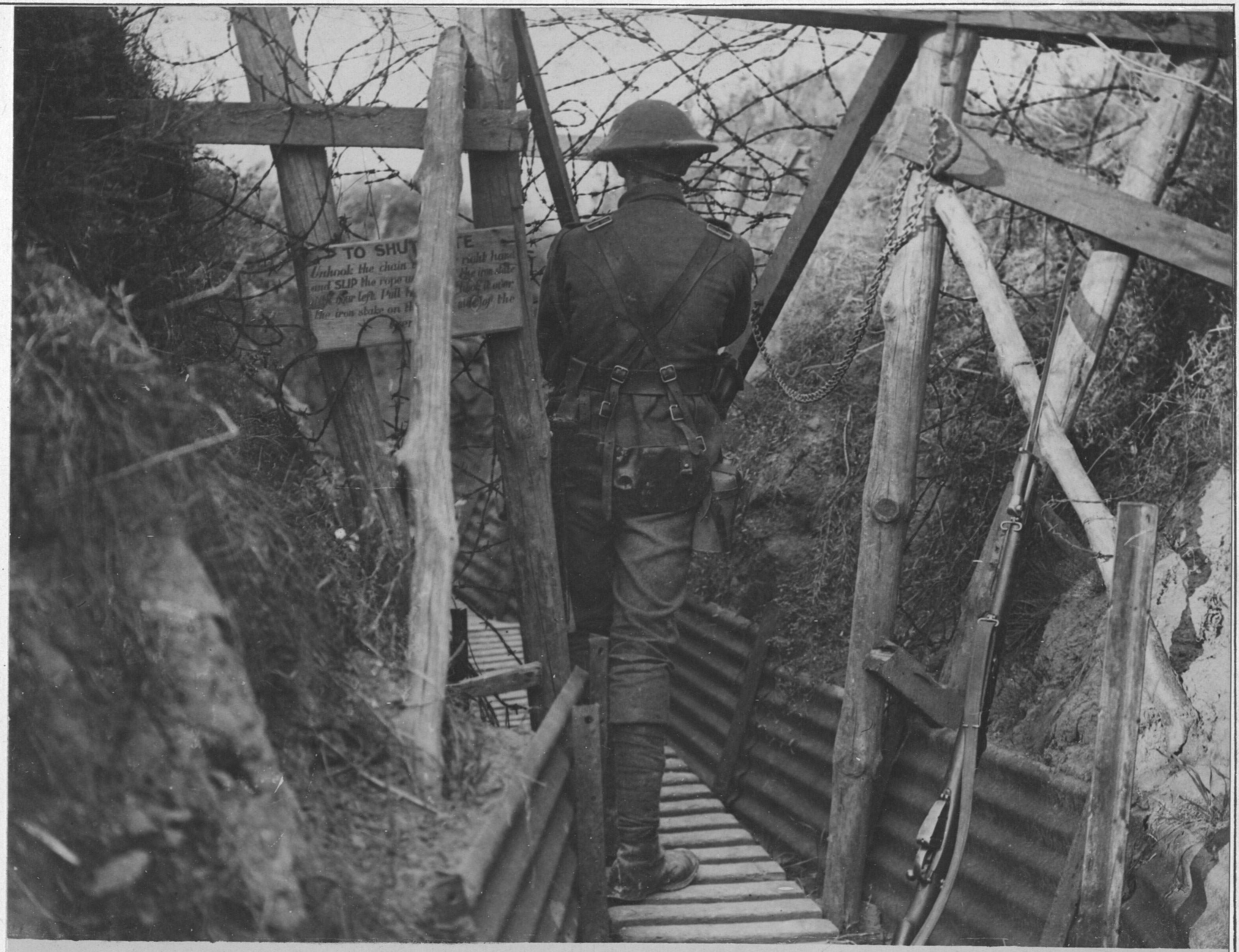
Document
Abandoned German Front Line Trench on the Flanders Field
6/11/17
The original caption for this photograph reads: Battle of Flanders. Scene in the old German front line.
It comes from a series of photographs depicting military activities during World War I that were taken by British photographers and acquired by the U.S. War Department.
It comes from a series of photographs depicting military activities during World War I that were taken by British photographers and acquired by the U.S. War Department.
This primary source comes from the Records of the War Department General and Special Staffs .
National Archives Identifier: 16580232
Full Citation: Photograph 165-BO-1191; Abandoned German Front Line Trench on the Flanders Field ; 6/11/17; British Photographs of World War I, 1914 - 1918; Records of the War Department General and Special Staffs , ; National Archives at College Park, College Park, MD. [Online Version, https://docsteach.org/documents/document/abandoned-german-trench, April 20, 2024]Abandoned German Front Line Trench on the Flanders Field
Page 1




